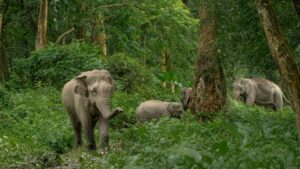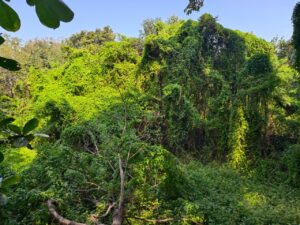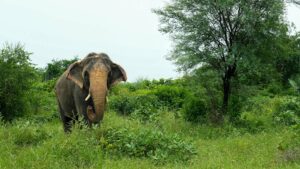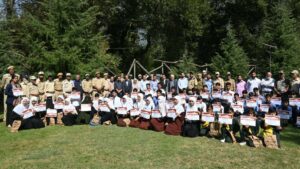When Wildlife SOS launched Haathi Sewa, India’s 1st mobile elephant clinic, it set out with one powerful promise: we would bring care to every elephant that needs it. That promise took shape in February at Kaziranga and Manas, in Assam, where the clinic was flagged off and more than 80 elephants received hands-on care that included deworming, vaccinations, wound management, and relief for long-ignored ailments. Mahouts watched and learned as our veterinarians cleaned abscesses and demonstrated simple husbandry fixes. For many, it was the first time structured veterinary care for elephants had reached them. It felt less like a ceremony and more like a covenant to show up where help is hardest to reach.
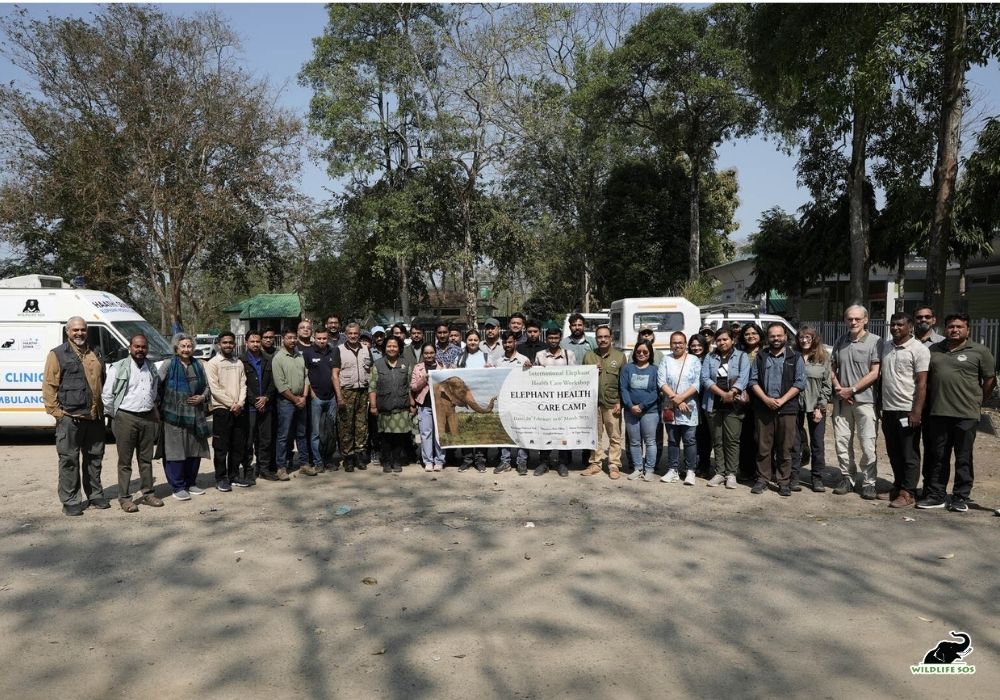
The mobile elephant clinic returned to Kaziranga National Park by the end of March, moving through Bagori, Mihimukh, and Agoratoli ranges, with detours to Merapani (Golaghat), Laokhowa Wildlife Sanctuary (Nagaon), and the Nag Sankar and Khora ranges. Under the leadership of Dr. E. Gochalan and in support of the forest department there, the team treated 26 elephants, out of which 15 were privately owned and 11 were with the forest department.
Each day unfolded in a steady rhythm of care, medical check-ups, wound dressings, and small but meaningful victories. Joymala, a 59-year-old female, battled persistent eye discharge and struggled to lie down. Bhagyabati, 55, with painful foot rot and a bent forelimb, leaned gently forward for support during treatment. Meena, nearly 50, sightless in one eye, coped with stiff joints yet responded with trust to her mahouts. Rohimala, a 48-year-old female, limped after a deer’s antler had pierced her foot pad. And Ganesh Prasad, a young male of about 31 years of age, bore the deep scars from a wild elephant attack, especially on his trunk.
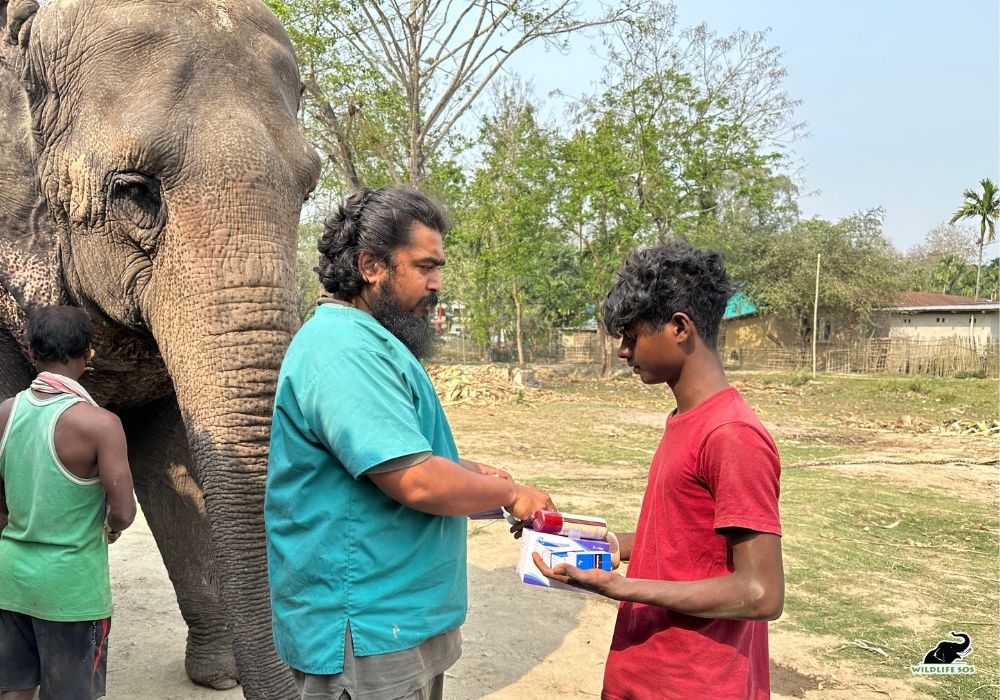
Most mornings began in Bagori, where elephants stood patiently with their mahouts at the edge of the grasslands. Familiar patterns emerged during health checks: cloudy eyes and corneal opacities in older females like Purnima (45) and Lakhi Purnima (50), worn-down foot pads, abscesses near the temples, and the unmistakable smell of untreated pododermatitis, which is a painful foot infection that causes swelling and lameness. Our team trimmed overgrown nails, cleaned and flushed wounds, and introduced simple yet effective daily routines: salt-mixed foot soaks, softer bedding, and mineral supplements to ease their recovery.
At Laokhowa, tuskers like Bikram (28) and matriarchs like Rajumala (57) presented papillomatous skin, a condition where the skin develops wart-like growths, lesions and chronic spinal abscesses. In addition to treatments that eased their immediate pain, the elephants were also provided with vaccinations and deworming as preventive care. In Nag Sankar, younger forest department elephants like Rai Bahadur, Kirpa Chariya, Nunaimala, and calf Phaguni received routine care, while Mohonmala at Khora needed tender attention for a torn trunk tip.
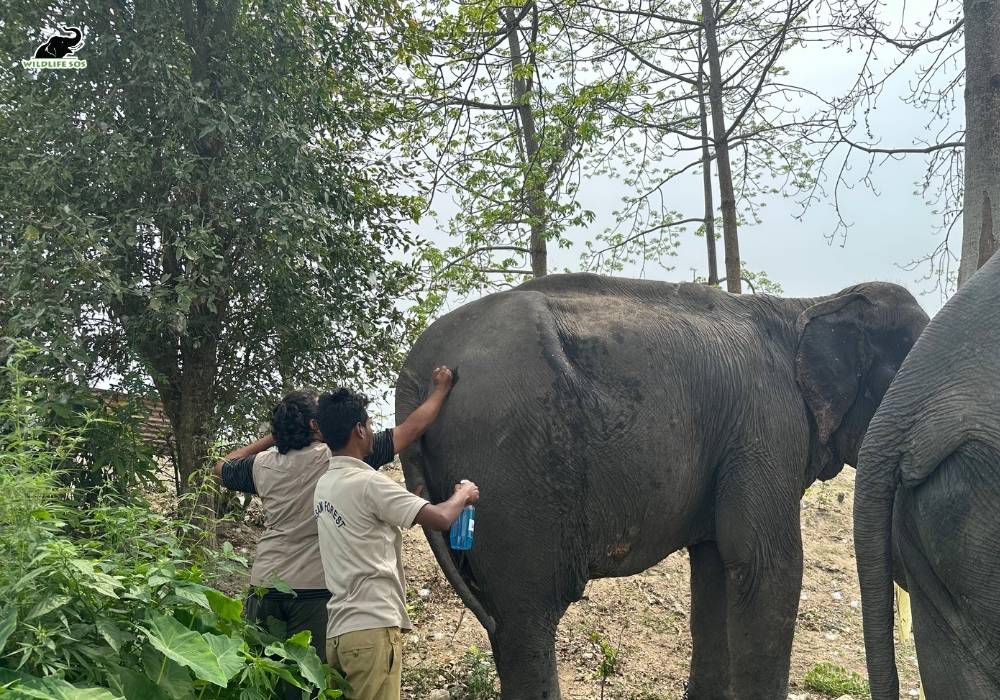
Medicine mattered, but so did conversation. Under the shade of tamarind trees or beside a forest camp, the team sat with mahouts to discuss feed, rest, and looking after the elephant’s feet. The latter includes simple additions to their routine, like drying feet after river crossings, checking pads weekly for cracks, and swapping abrasive tethers with softer alternatives, so that long-term issues can be prevented in elephants.
After steady progress in Assam, the Haathi Sewa initiative reached the hills of Meghalaya in July, continuing the journey of care and training. Led by Dr. Lalit Kumar Jangid, the Haathi Sewa team worked with the support of the forest department to carry forward this effort. As monsoon clouds gathered above, four privately owned elephants awaited the team in Jirang, Ri-Bhoi, of which two — Bahadur and Lakhi — were tuskers, and the other two were females named Parvati and Lukhi. Each received a full check-up, on-the-spot care for colic, nail wounds, skin irritation, eye discharge, and abscesses. Overgrown toenails were taken care of, and footcare training was given to the mahouts. Deworming, tetanus vaccinations, and treatment charts were shared so that they can be followed diligently.
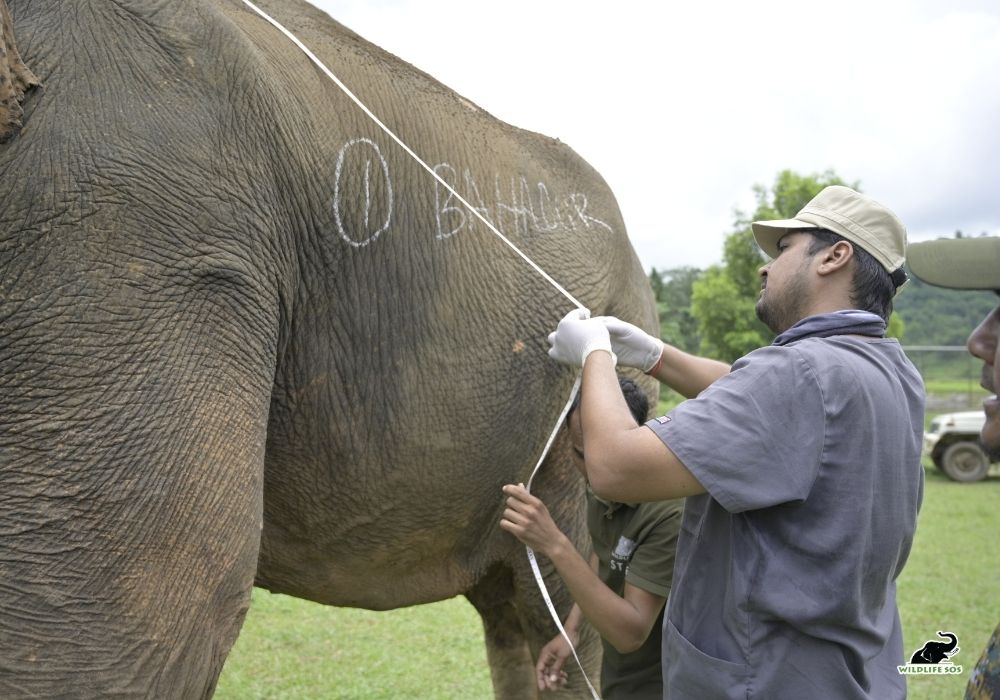
Back in Assam, the Haathi Sewa team reached Nagao,n where a privately owned female elephant, Lakhi, waited by the roadside with her caretaker. Her swollen stifle, tail wound, and tired feet told the story of prolonged neglect. The team treated her inflammation, dressed the tail, and recommended gentle stall rest, softer bedding, and short, level walks to help her recover.
After Nagaon came Chapanala, where two privately owned female camp elephants, Podumani and Lakhimala, received full health assessments. Along with deworming and foot care, blood samples were collected, and the team trained mahouts in daily husbandry, creating enrichments, and basic health monitoring. In both Assam and Meghalaya, between July and August, 11 mahouts were taught how to practice foot inspections, mixing and providing elephants with oral rehydration, and using praise and treats to handle them calmly and gently. A well-wrapped injured foot or a neatly kept stall may be one way to measure the care given to a captive elephant, but the elephant’s response to its caretaker’s voice may also reveal the trust that it has formed with him.
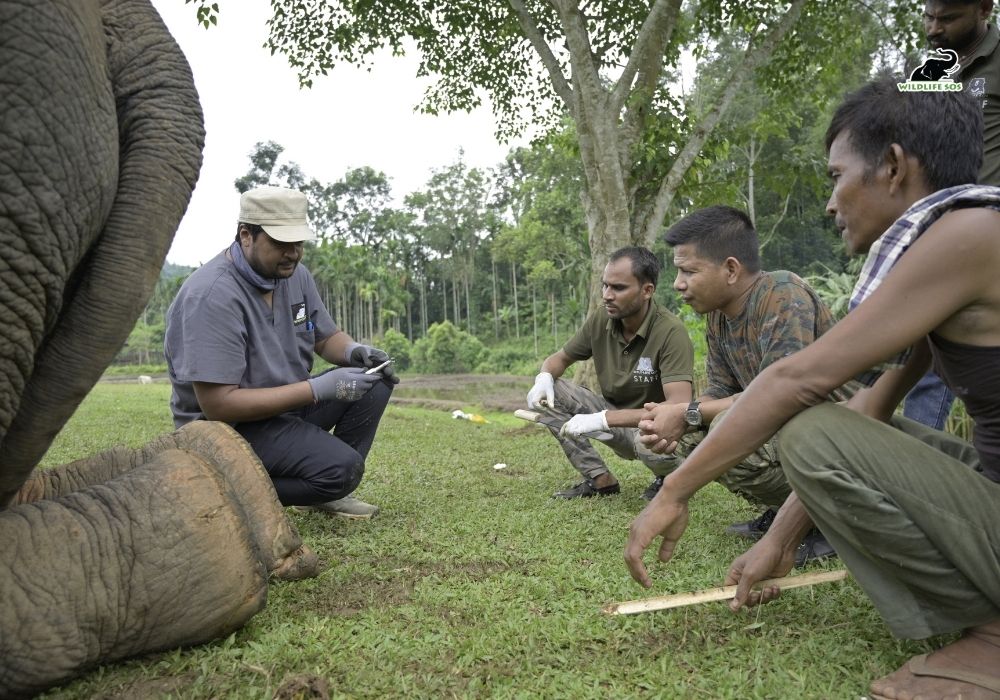
This round of dispensing treatments concluded at Balpakram National Park in the Garo Hills of Meghalaya, where Gangamoti, a forest department elephant, received her vaccinations, deworming, and a detailed health check. A total of eight elephants were treated here, five privately owned and three belonging to the forest department. The case notes record technical diagnoses such as adenitis, cracked toenails, foot rot, age-related frailties, eye opacities, and urinary troubles. Focussed treatments and professional advice from the mobile clinic team focused on how elephants can walk with less strain, eat with renewed appetite, and rest without fear of pain.
Why This Road Matters
From Bagori and Agoratoli to Jirang and Balpakram, Haathi Sewa became a dependable presence.. With the support of the respective forest departments, Wildlife SOS was able to bring structured care to more than 100 elephants across Assam and Meghalaya, with 26 of them between March and April, when we inaugurated Haathi Sewa in Assam. The medicine has been straightforward: antibiotics, anti-inflammatories, dewormers, vaccines, and topical dressings. But the impact lands deeper: fewer festering wounds, steadier gaits, calmer eyes, and mahouts who feel equipped rather than helpless.
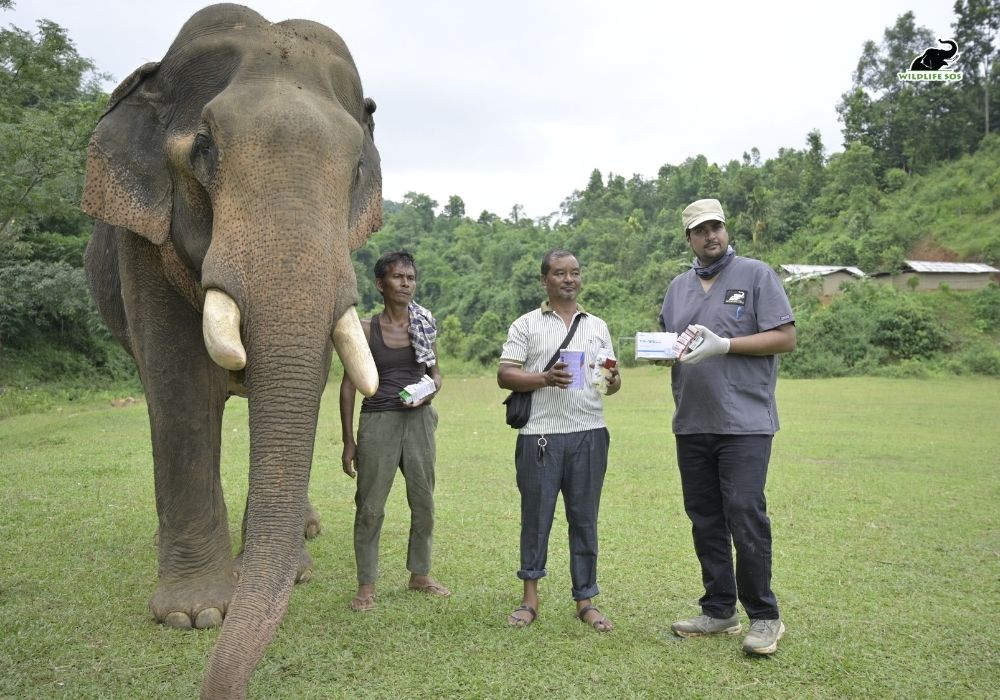
Most of all, the clinic-on-wheels keeps its original promise: to reach the elephants through thick and thin so that no elephant is too remote, too old or too forgotten. If you encounter an elephant in distress, please reach out to the Elephant Helpline at +91-9971699727 or write to us at info@wildlifesos.org. We’ll meet you on the road.
Feature image: Atharva Pacharne/ Wildlife SOS


